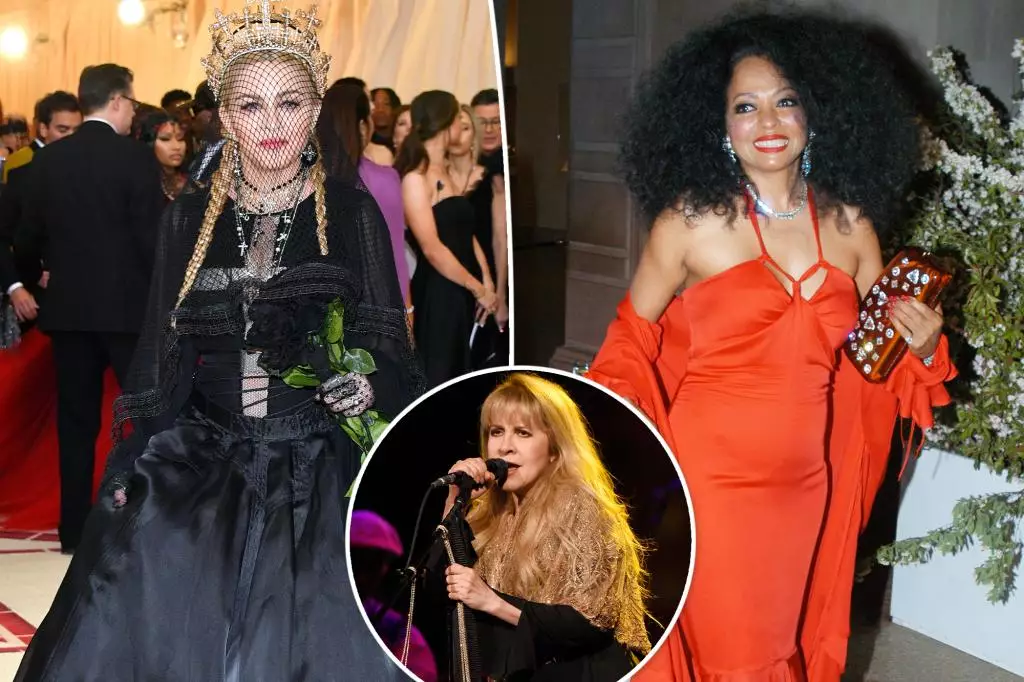The Met Gala remains an essential date on the fashion calendar, transcending mere celebrity appearance to become a tapestry of cultural significance, artistic expression, and philanthropy. This year’s theme, “Superfine: Tailoring Black Style,” sets the stage for an extraordinary gathering of talent, promising not just a showcase of haute couture but a celebration of Black creativity in fashion. Such themes are not just adornments; they evoke discourse on representation, identity, and the nuanced aesthetics that shape contemporary style.
A Star-Studded Lineup
As excitement builds, the roster of attendees is nothing short of legendary. Icons like Madonna, Stevie Wonder, and Diana Ross not only symbolize the pinnacle of entertainment but also serve as reminders of the cultural milestones achieved by Black artists. Diana Ross’s presence, accompanied by daughter Tracee Ellis Ross and grandson Evan, emphasizes the intertwining of family legacy and artistic prestige. The presence of Lauryn Hill, revered for her impactful yet scarce public appearances, underscores the power of monumental figures gracing the carpet.
Among the newcomers, characters like Lorde and Shaboozey add a fresh pulse to the gathering, showcasing how the gala continues to evolve. The infusion of Broadway talents such as Nick Jonas and Adrienne Warren hints at an expansive embrace of artistic diversity, encouraging a dialogue that moves beyond static definitions of stardom.
Fame Meets Philanthropy
Hosted by the venerable Anna Wintour, the Met Gala is more than a fashion spectacle; it is a crucial fundraiser for the Met’s Costume Institute. This duality of purpose—the blending of fashion with philanthropy—catapults the event into a unique realm. The exclusivity of invites further elevates the allure, ensuring that those fortunate enough to step onto the carpet are not just celebrities, but luminaries in their fields. Approval from Wintour herself adds a layer of prestige, tying individual success to collective cultural appreciation.
The heavy representation of athletes, such as LeBron James and Olympic fencer Miles Chamley-Watson, embodies modern notions of celebrity. They exemplify rising figures who challenge traditional concepts of fame and success beyond entertainment, pointing the way toward a future where performance is celebrated in myriad forms.
The Art of Fashion Meets Cultural Commentary
The gala’s theme prompts attendees to think critically about the clothes they wear; fashion becomes a canvas for personal narrative and social commentary. The anticipated outfits will likely not only highlight aesthetic values but provoke discourse around cultural ownership and innovation within the fashion industry. As designers prepare to unleash their creations, the dialogue around intended narratives becomes as important as the fashion statements themselves.
While stars like Blake Lively and Gisele Bundchen won’t be partaking this year, their absence opens spaces for fresh voices and rising stars—an affirmation of the generational shifts occurring in fashion and entertainment. The intertwining of these variables promises an evening of stunning fashion spectacles and culturally rich performances, painting a vivid picture of the contemporary cultural landscape. With each event, the Met Gala evolves, becoming a mirror reflecting society’s values, aspirations, and transformations.

